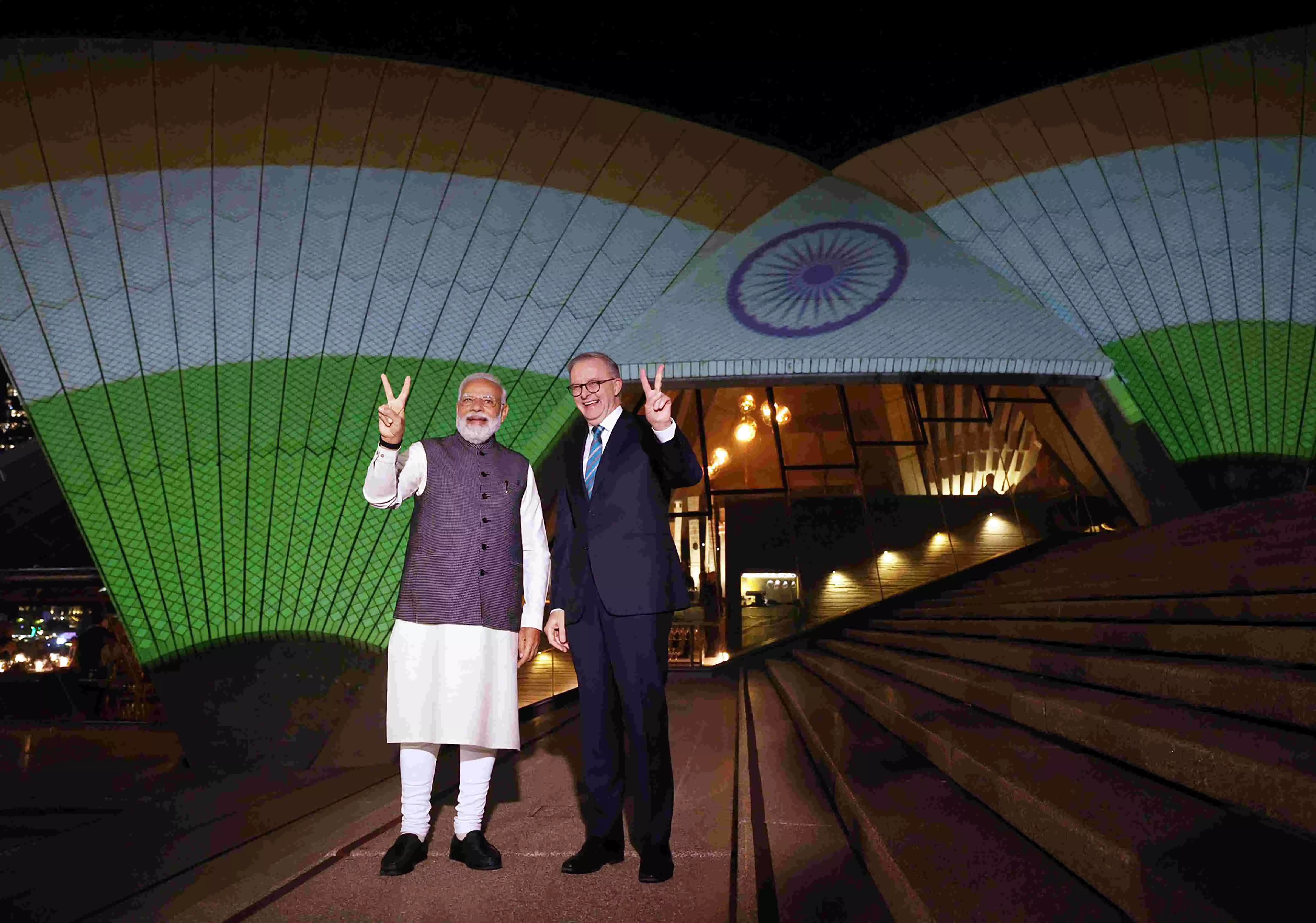Flourishing friendship

Shaping up of a strong foreign policy has been one of the remarkable achievements of the NDA government since 2014. And it won’t be an exaggeration to say that the strengthening of the Indo-Australia ties is among the brightest spots of India’s foreign policy. Even as the topmost leaders of the United States and Japan backtracked from the Quad summit which was to be held in Sydney, the Indian Prime Minister found it wise to visit the country under a modified bilateral meeting. Notably, US President Joe Biden was compelled to return to Washington for debt ceiling talks, and Japan PM declared his refusal subsequently — leading to a shortened Quad summit in Hiroshima itself where the leaders had assembled for the G7 summit. The Indian Prime Minister’s decision to not defer his visit highlights the importance that India accords to Australia and the Indian diaspora living there. And certainly, the PM received commensurate reciprocation from the Australian PM and the diaspora. As Modi addressed the gathering in one of Sydney’s biggest indoor stadiums, Australian PM Anthony Albanese confirmed that "the last time I saw someone on this stage was Bruce Springsteen and he did not get the welcome that Prime Minister Modi has got." The reason for this warm welcome has been the people-to-people connection between the two nations, which the Indian Prime Minister refers to as “the real reason, the real power.” As per a BBC report, the census data of Australia reveals that people from India constitute almost a quarter of the overall number of migrants to Australia since 2016. The Indian diaspora constitutes three per cent of the overall Australian population. It is not without reasons that the Indian PM referred to the Indian diaspora in Australia as a “living bridge”. In fact, the diaspora represents one of the three Ds on which Indo-Australian relations thrive — the other two being democracy and dosti (friendship). This enervating relation between the two nations, however, has been a recent phenomenon, relatively. The ties between the two nations had been kept under cold storage for quite a long time. While in the first four decades since independence the need and strategy for sustainable bilateral relations was hardly envisaged, in the 1990s, the rift grew wider on account of mistrust on nuclear issues. Even as things cooled down eventually, the first one and a half decade of the 21st century was marred with inaction on the Indian front. However, the trajectory that the bilateral relations between the two nations took after the Indian Prime Minister’s visit in 2014 could serve as an example for any set of two nations in the world. India’s growing thaw with Australia remains unhindered despite a leadership change Down Under — reflecting that the roots of the relation have been nurtured. While the abstracts have acted as an adhesive force bringing India and Australia closer, the countries have advanced impressively in cementing the concrete that would ensure sustainability in the relations. Delhi and Canberra now share strong ties in the sectors of defence and security, trade and investment, science and technology etc. These cooperation areas are tied together by an encompassing vision of maintaining a free and open Indo-Pacific, with an obvious objective of countering China. During Modi’s recent visit, the two sides deliberated on the need for finally signing a Comprehensive Economic Cooperation Agreement (CECA) by December. The CECA between the two countries has been under deliberations for around a decade. It appears the time has arrived to materialise it on the ground. Furthermore, Modi and Albanese announced the opening up of an Australian consulate in Bengaluru and an Indian consulate in Brisbane, apart from an agreement on Migration and Mobility. Also, a progression was made towards establishing an Australia-India Green Hydrogen Taskforce. Of course, there have been certain sore points amid the thriving Indo-Australia relations. The Indian Prime Minister expressed his concern over vandalism and attacks defacing community centres and temples by pro-Khalistan elements. India and Australia also differ on the Russia-Ukraine war. Leaders of both the nations should make sure that these differences don’t acquire the centre stage. There are too many positives to look for in the bilateral ties between the two nations.



